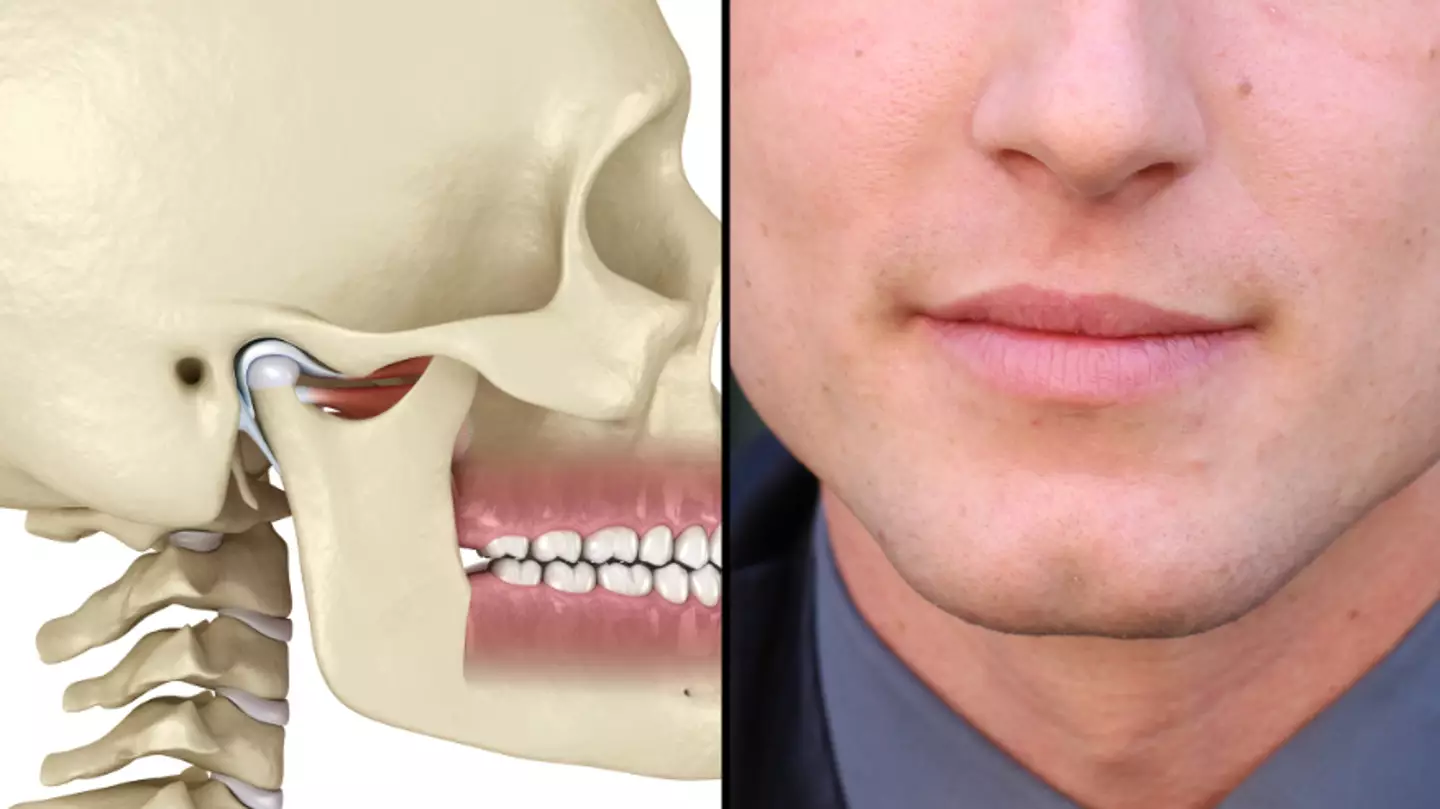
Another day, another social media trend that is claimed to improve how we look - this time with our jawline. But what exactly is mewing and does it work?
Go on TikTok and type 'mewing' in, and you'll be presented with thousands of videos with combined views in the millions.
Claiming it can change the shape of your face permanently, it's got people on social media apps giving it a go and posting their 'results'.
What is mewing?
The technique is named after two UK orthodontists, John and Mike Mew, who use it as part of their orthodontic method called orthotropics - a branch of dentistry that treats misaligned bites by correcting oral and head posture.
Advert
John Mew said he used the technique on his children growing up because his daughter had poor facial alignment and crooked teeth until she was four years old.
In practice, it sounds like quite an easy thing to do as well.
It basically involves you placing your tongue at the roof of your mouth and applying pressure to your upper gum.
Over time, this is claimed to completely change the structure of a person's jaw is they do it regularly.

What are the supposed benefits of mewing?
Some reports say that mewing on a regular basis will give you a more defined, square shaped jawline.
Advert
On top of this, it is allegedly beneficial in improving your sleep and reduce how much you breathe through your mouth.
"Purported uses include resolving sleep apnea, miscellaneous problems related to breathing and swallowing, speech pathology, temporomandibular joint dysfunction (TMD) and pain, and even sinusitis," one scientific paper says on the matter.
How to mew
You should first close your mouth before resting your bottom teeth behind your upper front teeth.
Advert
Then you should flatten your tongue against the top of your mouth while keeping your mouth shut.
From there, you should hold it for around 30 seconds and repeat multiple times throughout the day.
What do the experts say?
It's a bit of mixed bag, really.
Advert
Dr. Chelsea Perry DMD, from Elite Dental Studio, told LADbible she would 'love for something as simple as this to work but unfortunately it does not'.
Dr Perry said: "There is no scientific evidence to support it. The shape of your face really comes down to genetics, muscle development, and bone growth. Not only does mewing not work, but it can also cause problems.
"Forcing your tongue into an unnatural position could disrupt tooth alignment as well as worsen bite problems or speech issues. The most evidence (anecdotal) you hear/see of it 'working' is in younger people who are still in their growth phase, so their bodies are changing."
Dr. Matt Jones at Circ Dental said: "The jawline's structure is largely determined by the mandible (jawbone) and the overlaying muscles—not something easily changed by mere tongue placement.
Advert
"For those seeking facial adjustments, professionals stress the importance of consulting with healthcare providers rather than relying on unproven methods like 'mewing'.

"For substantial changes, orthognathic surgery, often combined with braces, can adjust the jaw's width or length, offering significant transformations. Alternatively, for those looking for less drastic solutions, non-invasive options like dermal fillers or 'threading' provide subtle enhancements without extensive procedures.
"It's important to note that while 'mewing' itself is not a cure-all, certain tongue movements known as 'tongue thrusting' can impact dental alignment, leading to issues like tilted front teeth and open bites. These conditions are typically corrected through orthodontic treatments and long-term use of retainers."
What about the supposed individual benefits?
It is claimed that consistently mewing can improve how your face looks and better your health through helping with issues such as sinusitis.
James Cunningham, a fitness coach from Total Shape holding a BSc in Sport & Exercise Science from the University of Hertfordshire, has offered his insight in to both supposed byproducts.
"Mewing enthusiasts claim that maintaining proper tongue posture can lead to a more defined jawline, improved facial symmetry, and even potential correction of malocclusion (misalignment of teeth)," James says.
"The idea is that by engaging the muscles of the tongue, jaw, and neck, you can encourage forward growth of the maxilla (upper jaw) and consequently, better facial structure.

"While there's anecdotal evidence supporting these claims, scientific research on the topic is limited. However, promoting good oral posture certainly can't hurt, and it may contribute positively to facial appearance over time."
On health benefits, James said: "Can mewing really help with conditions like sleep apnea and sinusitis? Well, there's some speculation and a bit of mixed evidence.
"Let's start with sleep apnea. The theory is that by expanding the airway through proper tongue posture, mewing might alleviate symptoms of sleep apnea by allowing for better airflow during sleep.
"Some individuals report improvements in their sleep quality after practicing mewing, but more rigorous studies are needed to confirm these effects conclusively.
"As for sinusitis, the connection to mewing is a bit less straightforward. Sinusitis is inflammation of the sinus cavities, usually due to infection or allergies, and it's unclear how tongue posture directly affects this condition.
"However, proponents suggest that proper tongue posture could potentially improve nasal breathing, which might help alleviate some symptoms of sinusitis. Again, while there's some anecdotal evidence supporting this idea, scientific research is lacking."
Featured Image Credit: Getty Stock ImagesTopics: Health, Lifestyle, Social Media, TikTok, Twitter, Viral, World News